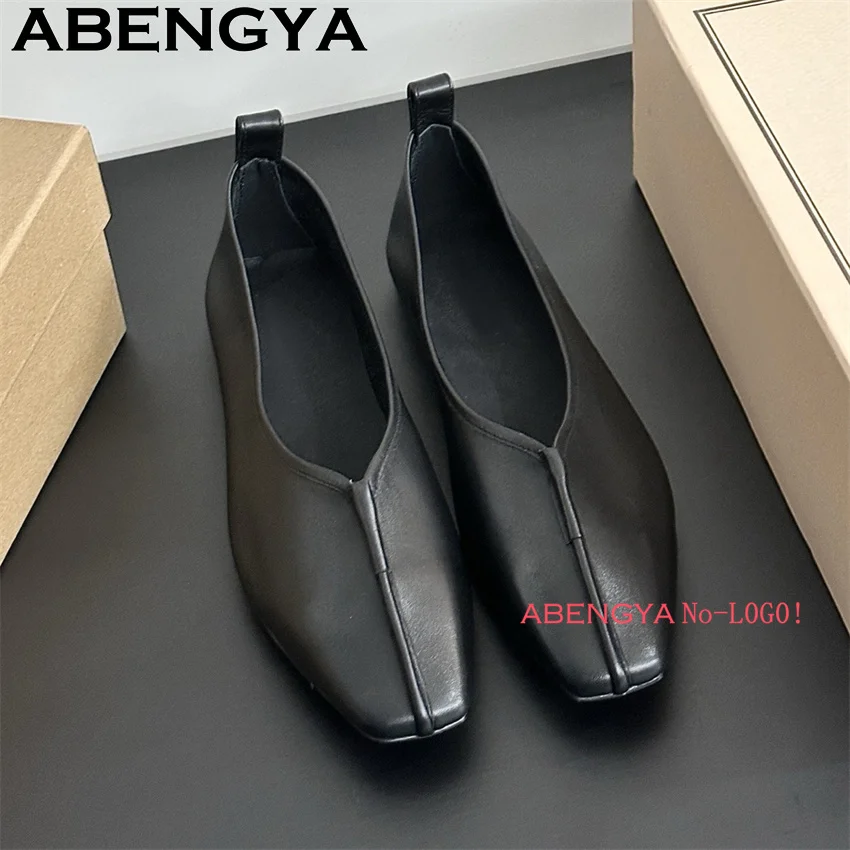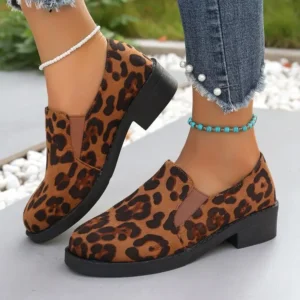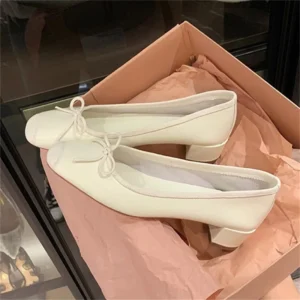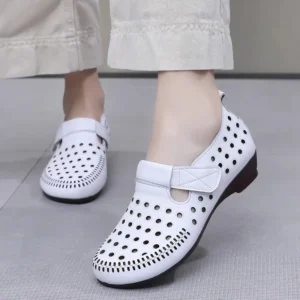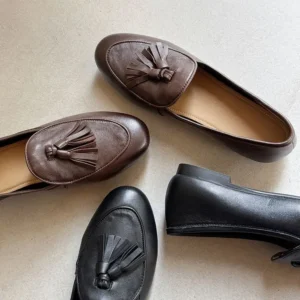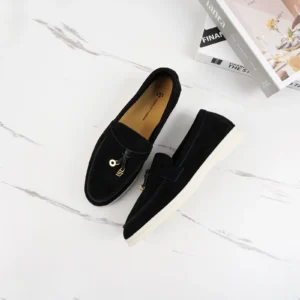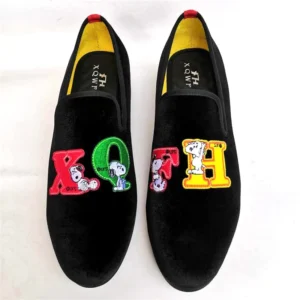Introduction: Why Loafers Have Become the Ultimate Walking Companion
Comfortable walking loafers represent the perfect blend of timeless style and practical functionality. What began decades ago as simple slip-on shoes has evolved into sophisticated footwear capable of providing exceptional support during extended periods of walking. Unlike their early predecessors that prioritized appearance over comfort, modern walking loafers now incorporate advanced comfort technologies while maintaining their classic aesthetic appeal.
The magic of walking loafers lies in their unique versatility. Few footwear styles can transition so seamlessly from professional settings to casual outings while providing the support needed for hours on your feet. Their slip-on convenience eliminates the hassle of laces while still offering the structure and support that casual slides simply cannot match.
As all-day walking comfort style loafers have gained popularity, manufacturers have responded with innovations specifically targeting the needs of active wearers. This comprehensive guide will explore the essential comfort features, materials, and designs that make certain loafers ideal for walking, helping you identify the perfect pair that won’t force you to choose between style and comfort.
Our collection of women’s comfortable flat loafers demonstrates how modern designs skillfully balance these priorities, creating footwear that truly deserves a place in every wardrobe.
Essential Comfort Features: What Makes a Walking Loafer Truly Comfortable
When evaluating loafers for walking comfort, six critical elements determine whether a pair will provide all-day support or lead to discomfort. These elements work in harmony to create a walking experience that feels natural, supportive, and fatigue-free.
The science of comfortable footwear isn’t subjective—it’s based on measurable design features that podiatrists and footwear experts consistently identify as essential for healthy feet during extended walking. These include:
- Superior cushioning that absorbs impact
- Anatomical arch support
- Durable yet flexible outsoles
- Breathable upper materials
- Precise fit with adequate toe room
- Lightweight construction to reduce fatigue
Understanding these core components helps distinguish truly comfortable walking loafers from those that merely look appealing. The secrets of supreme comfort in loafers often lie in these carefully engineered details that might not be immediately visible but make all the difference in how your feet feel at the end of a long day.
Cushioning Technology: The Foundation of Walking Comfort
The insole cushioning in your loafers forms the critical foundation of walking comfort, acting as the primary buffer between your feet and the ground. This component directly influences how much fatigue and discomfort you’ll experience during extended periods of walking.
Different cushioning materials offer varying benefits:
Memory foam provides personalized comfort by conforming to your foot’s unique shape, offering excellent pressure relief for sensitive areas. However, it may compress more quickly than other materials, potentially losing its supportiveness over time.
EVA (ethylene vinyl acetate) foam delivers lightweight cushioning with excellent shock absorption and responsiveness. Its bounce-back quality helps maintain energy during walking, though it typically doesn’t conform as intimately to the foot as memory foam.
Premium options like Poron and OrthoLite represent the gold standard in cushioning technology. These materials offer remarkable durability while maintaining their shock-absorbing properties through thousands of steps. Poron excels in impact protection, while OrthoLite adds antimicrobial benefits with exceptional breathability.
The best most comfortable loafers for walking all day often feature removable insoles, allowing you to insert custom orthotics if needed. This adaptability makes them suitable for a wider range of foot conditions and personal preferences.
Quality cushioning does more than feel good—it actively protects your joints by absorbing the repetitive impact forces that walking generates. With each step producing forces several times your body weight, this protection becomes increasingly valuable throughout the day.
Arch Support: The Secret to Preventing Foot Fatigue
Proper arch support is perhaps the most crucial element in preventing foot fatigue during extended walking. This feature works by distributing pressure evenly across your foot rather than concentrating it on certain areas, which can lead to pain and fatigue.
When you walk, your foot naturally pronates (rolls inward) to absorb shock. Without adequate arch support, many people over-pronate, causing the arch to flatten excessively. This strains the plantar fascia—the band of tissue supporting your arch—and can lead to discomfort throughout the foot and even into the knees and back.
Walking loafers generally offer two types of arch support:
- Built-in support with contoured footbeds that follow the natural shape of your foot’s arch
- Accommodative designs with removable insoles that allow for custom orthotics
Your ideal support depends largely on your arch type:
- Flat feet benefit from moderate, gradual support that doesn’t force the foot into an uncomfortable position
- Normal arches work well with medium support that maintains their natural shape
- High arches require more substantial support to fill the larger gap and prevent excess strain
When examining loafers, look for visible contours in the footbed or terms like “anatomical support” in descriptions. Quality arch support shouldn’t feel like a hard bump against your foot but rather a gentle, consistent contact that feels natural with each step.
For those seeking specific solutions, finding comfort and foot support in flat loafers provides targeted guidance for maintaining proper support in lower-profile designs.
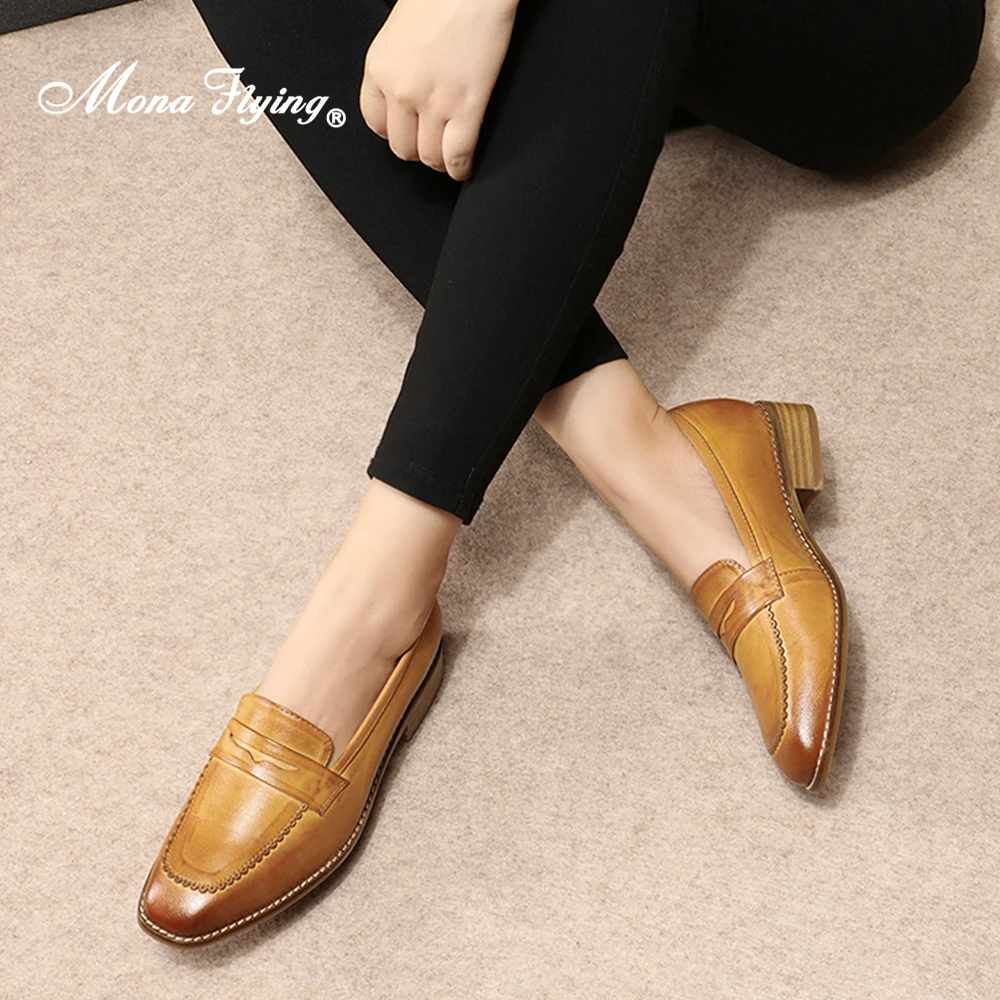
Outsole Construction: Balancing Durability with Flexibility
The outsole of walking loafers plays a crucial yet often overlooked role in comfort. This component must strike a delicate balance—durable enough to withstand daily wear while remaining flexible enough to allow natural foot movement.
Material choice significantly impacts outsole performance:
| Outsole Material | Weight | Durability | Flexibility | Shock Absorption |
|---|---|---|---|---|
| Rubber | Medium-Heavy | Excellent | Good | Excellent |
| EVA | Very Light | Moderate | Excellent | Very Good |
| Polyurethane | Medium | Very Good | Good | Good |
| Leather | Light | Poor-Moderate | Moderate | Poor |
Rubber outsoles provide exceptional durability and grip, making them ideal for varied walking surfaces. Their naturally shock-absorbing properties protect your joints, though some rubber formulations can add significant weight to the shoe.
EVA outsoles stand out for their incredibly lightweight nature and excellent flexibility. They allow your foot to move naturally while providing good shock absorption, though they typically wear down faster than rubber alternatives.
Tread patterns matter as well—especially for walking on different surfaces:
- Flat, continuous patterns provide more surface contact for smooth indoor surfaces
- Light siping (small cuts in the sole) improves traction on slightly wet surfaces
- Deeper grooves or lugs provide better grip on uneven outdoor terrain
The ideal thickness balances protection and ground feel. Too thin, and you’ll feel every pebble; too thick, and the shoe becomes stiff and cumbersome. Many round toe loafers for comfort feature a moderate outsole thickness with flexibility grooves strategically placed at the ball of the foot where natural bending occurs.
Upper Materials: Finding the Perfect Balance of Structure and Flexibility
The upper material of your walking loafers dramatically affects their comfort, breathability, and ability to conform to your foot’s shape over time. Each material offers distinct advantages and considerations for extended walking.
Full-grain leather provides excellent durability and develops a personalized fit as it molds to your foot over time. This natural material offers moderate breathability and becomes increasingly comfortable with wear. However, it typically requires a longer break-in period and may feel stiff initially. Our women’s leather flat loafers showcase the timeless appeal and long-term comfort potential of quality leather uppers.
Suede delivers a softer, more immediately comfortable experience with excellent flexibility. It typically requires less breaking in than full-grain leather while still offering good durability. The primary drawback is its vulnerability to staining and water damage, requiring more protective care. For those preferring this material, women’s suede flat loafers provide numerous options combining style with walking comfort.
Modern textile and knit uppers represent the most immediately comfortable option, requiring virtually no break-in time. These materials offer superior breathability and natural stretch that accommodates foot swelling during extended walking. While generally not as durable as quality leather, advancements in textile technology have significantly improved their longevity.
The ideal upper material should:
* Flex naturally with your foot’s movement
* Provide adequate structure to support proper alignment
* Allow moisture and heat to escape
* Resist developing pressure points or rubbing spots
* Maintain its shape and support over time
Remember that material quality varies tremendously within each category—premium full-grain leather will outperform budget synthetic options in comfort and longevity, while advanced performance textiles may exceed the comfort of lower-quality leather.
The Perfect Fit: Why Size Alone Isn’t Enough
Finding walking loafers that truly fit involves much more than simply selecting your usual size. Proper fit ensures that comfort features actually work as intended, preventing discomfort before it begins.
The toe box deserves particular attention when evaluating walking loafers. This area must provide adequate space for your toes to spread naturally as you walk, especially during long periods when feet typically swell. Too tight, and you risk developing pressure points, numbness, or even long-term foot problems. Too loose, and your foot will slide forward, causing friction and instability.
Preventing heel slippage presents another challenge. Your heel should remain securely in place without feeling pinched or restricted. A slight grip around the midfoot often accomplishes this better than tight heel cups that can cause blisters and discomfort.
When measuring your feet for loafers:
* Measure later in the day when feet are slightly larger
* Stand while measuring to ensure natural weight distribution
* Account for both foot length and width
* Consider any foot conditions that require extra accommodation
Signs of proper fit include:
* About a half-inch of space between your longest toe and the shoe end
* No pinching across the widest part of your foot
* Heel remains in place when walking without gripping too tightly
* Even pressure distribution across your foot
Understanding how to wear loafers without hurting feet provides additional techniques for ensuring comfort, particularly during the breaking-in period.
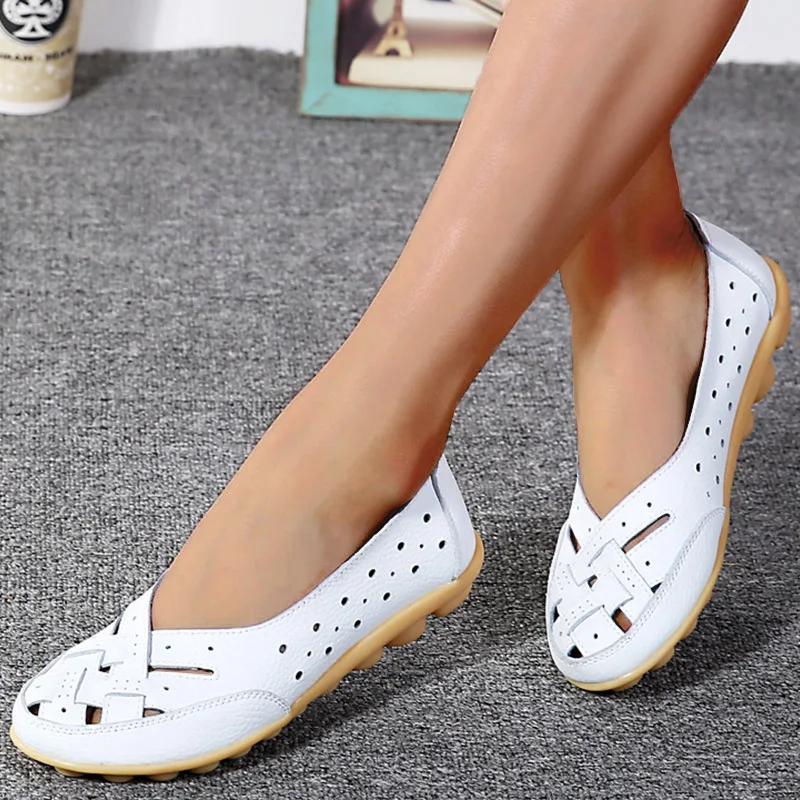
Lightweight Design: Reducing Fatigue On Long Walks
The weight of your walking loafers directly impacts energy expenditure and fatigue during extended periods of activity. Research shows that even small weight differences in footwear significantly affect metabolic costs—essentially, how much energy your body uses while walking.
For context, adding just 100 grams (about 3.5 ounces) per shoe increases energy expenditure by approximately 1% during walking. While this might seem negligible initially, the cumulative effect becomes substantial over thousands of steps. By day’s end, heavier shoes can leave you feeling significantly more fatigued.
Modern loafer designs achieve lightweight construction through several approaches:
- Strategic material selection, using lightweight components where durability requirements are lower
- Reduced bulk without sacrificing structural support
- Honeycomb or channeled midsole designs that remove material where it’s not needed
- Advanced synthetic components that weigh less than traditional materials
The challenge manufacturers face lies in reducing weight without compromising durability or support. The most successful lightweight loafers for city walking achieve this balance through thoughtful engineering rather than simply using thinner, less durable materials.
When evaluating loafers for weight, consider not just the overall feeling but where the weight is distributed. Weight concentrated in the heel or toe can disrupt your natural gait, while evenly distributed weight works with your walking motion for greater efficiency.
Types of Loafers: Which Styles Offer the Best Walking Experience
Not all loafer styles are created equal when it comes to walking comfort. Each classic design offers distinct advantages and potential limitations for extended periods on your feet.
Penny Loafers
The timeless penny loafer features a leather strap across the vamp with a diamond-shaped slot originally designed to hold a coin. Modern women’s classic penny loafers often incorporate comfort features while maintaining this traditional aesthetic. Their structured design provides good midfoot support, though the classic leather sole benefits from updating to more walking-friendly materials. Look for versions with cushioned insoles and rubber outsoles for the best walking experience.
Driving Loafers
Originally designed for automotive use, women’s classic driving loafers feature exceptionally flexible construction with distinctive rubber nubs extending up the heel. This design creates unparalleled flexibility that allows your foot to move naturally. However, the thin soles typically offer minimal cushioning and wear down quickly with regular walking on pavement. The best walking versions incorporate more substantial outsoles while maintaining the flexible upper design.
Tassel & Horsebit Loafers
These decorative styles feature distinctive ornaments—leather tassels or metal hardware—across the vamp. While traditionally more formal, modern women’s classic tassel loafers now come in walking-friendly versions. The key consideration is whether the decorative elements create pressure points during the foot’s natural flexing. Quality walking versions ensure decorations are positioned to avoid interfering with comfort.
Venetian Loafers
These minimalist slip-ons lack any decorative elements on the vamp, creating a sleek, uninterrupted surface. This clean design eliminates potential pressure points from hardware or stitching, making them naturally suited to walking comfort when constructed with appropriate support features. Their simple appearance makes them particularly versatile for different settings.
Modern Hybrid Designs
The most walking-focused innovations come from hybrid designs that combine loafer styling with athletic shoe technologies. These often incorporate visibly cushioned midsoles, engineered mesh panels, or anatomical footbeds. While purists might question their classification as true loafers, these hybrids offer exceptional walking comfort while maintaining the convenient slip-on design and business-appropriate appearance.
Women's Comfortable Flat Loafers, Women's Leopard Print Loafers, Women's Low Heel Loafers
$82.50 Select options This product has multiple variants. The options may be chosen on the product pageWomen's Block Heel Loafers, Women's Square Heel Loafers, Women's Square Toe Flat Loafers
Price range: $73.61 through $86.41 Select options This product has multiple variants. The options may be chosen on the product pageWomen's Comfortable Flat Loafers, Women's Leather Flat Loafers, Women's Round Toe Flat Loafers
$124.88 Select options This product has multiple variants. The options may be chosen on the product pageWomen's Black Flat Loafers, Women's Black Penny Loafers, Women's Classic Tassel Loafers
$194.28 Select options This product has multiple variants. The options may be chosen on the product pageWomen's Loafer Mules, Women's Suede Flat Loafers
$190.23 Select options This product has multiple variants. The options may be chosen on the product pageWomen's Classic Tassel Loafers, Women's Suede Penny Loafers
Price range: $133.16 through $147.56 Select options This product has multiple variants. The options may be chosen on the product page
At Artisan Haul, we carefully evaluate each loafer style for its comfort potential, selecting designs that successfully balance traditional aesthetics with modern comfort engineering.
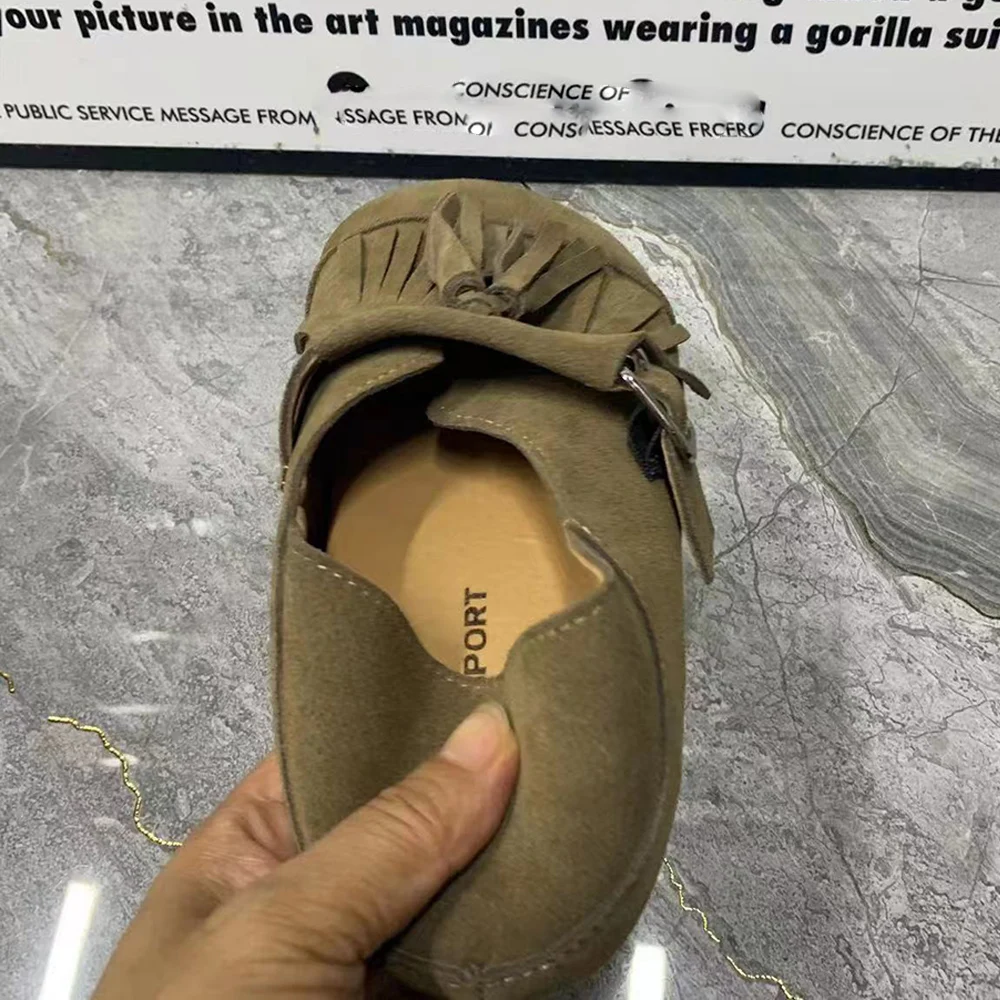
Navigating Specific Foot Conditions: Finding Relief in Comfortable Loafers
Different foot conditions require targeted features in walking loafers. Understanding your specific needs can transform your comfort experience dramatically.
Plantar Fasciitis
This common inflammatory condition causes heel pain and requires loafers with exceptional arch support and heel cushioning. Look for designs with deep heel cups that stabilize the rear foot and contoured arch support that prevents the plantar fascia from overstretching. Removable insoles allow for custom orthotic insertion if needed. Firmer materials through the midfoot provide the necessary structure, while cushioning under the heel absorbs impact.
Bunions
The enlarged joint at the base of the big toe requires accommodative fit rather than correction. Women’s round toe flat loafers provide the essential wider toe box that prevents pressure on the sensitive bunion area. Soft, flexible upper materials—particularly those with stretch—further reduce irritation. Avoid styles with decorative elements or stitching that cross directly over the bunion area.
Flat Feet vs. High Arches
These contrasting foot types require different support approaches:
For flat feet, moderate, gradual arch support prevents overpronation without creating pressure points. Look for loafers with structured midsoles that resist collapsing inward and broader outsoles for stability.
High arches benefit from maximum cushioning that compensates for their reduced natural shock absorption. Deep heel cups help center the foot, while substantial arch fills prevent gaps between the footwear and the natural arch curve.
Wide or Narrow Feet
Width-appropriate loafers are essential for walking comfort. Shoes that are too narrow create compression and potential nerve issues, while overly wide styles allow sliding and friction. Many quality brands offer multiple width options in the same style, allowing precise fitting. When width options aren’t available, look at alternative last shapes (the form shoes are built around)—European brands often run narrower, while American brands frequently offer more generous widths.
Learning to make penny loafers comfortable provides additional strategies for adapting traditional styles to accommodate specific conditions.
Weather Considerations: Selecting Loafers for Different Climates
The ideal walking loafer varies significantly depending on your climate and typical weather conditions. Adapting your selection to your environment ensures comfort regardless of temperature or precipitation.
For warm weather walking, breathability becomes the primary concern. Natural materials like unlined suede and perforated leather allow heat and moisture to escape, preventing the discomfort of sweaty feet. Some modern designs incorporate discrete ventilation systems or moisture-wicking linings to enhance cooling. Lighter colors also reflect heat rather than absorbing it.
Rainy conditions demand water-resistant properties to maintain comfort. Full-grain leather with proper protective treatment provides natural water resistance while maintaining breathability. For more challenging conditions, look for designs with sealed seams, gusseted tongues, and hydrophobic treatments. Remember that even “waterproof” loafers will eventually allow moisture penetration during extended exposure.
Cooler weather walking benefits from insulating features without bulk. Shearling or flannel linings add warmth while cushioning, though these features may limit the shoes’ versatility across seasons. Closed-cell foam insoles provide thermal insulation from cold ground without significant weight or bulk.
Some versatile loafers adapt across seasons with removable components or materials that perform well in varied conditions. Understanding leather vs. suede loafer care helps maintain your footwear’s weather resistance and extends their useful life regardless of climate challenges.
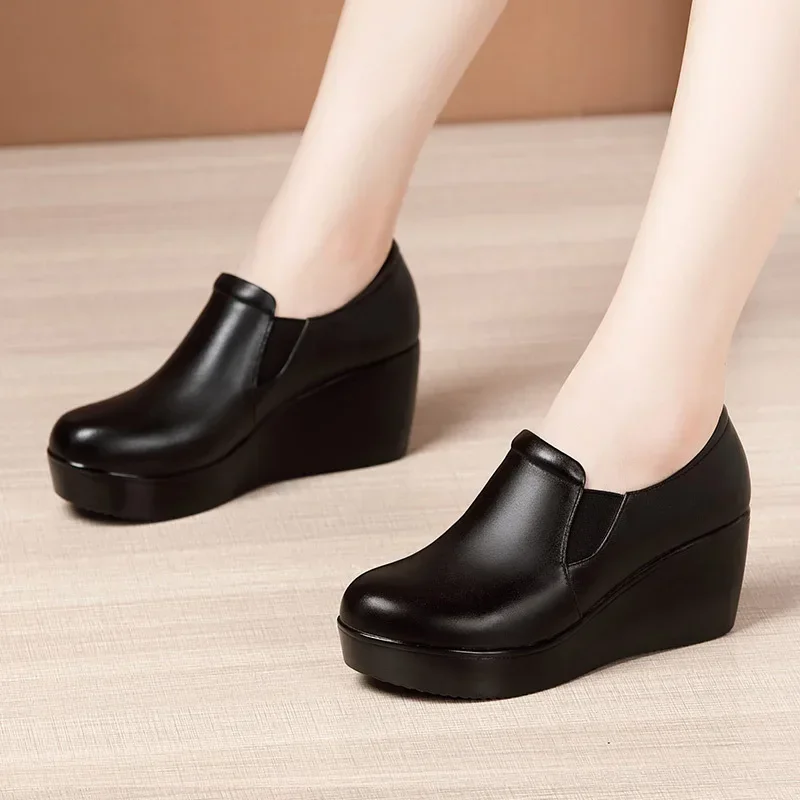
Our Top 10 Most Comfortable Walking Loafers of 2025
After extensive evaluation of comfort features, wear testing, and analysis of user experiences, we’ve identified the most exceptional walking loafers across various categories. Each recommendation excels in specific comfort areas while maintaining stylish design.
Best Overall for Comfort and Style
This standout combines premium cushioning technology with elegant design. Its anatomical footbed features three-zone comfort: extra cushioning at the heel, structured arch support, and metatarsal padding. The flexible rubber outsole provides excellent traction without adding unnecessary weight. The supple leather upper requires minimal breaking in, making it immediately comfortable for all-day wear.
Best for All-Day Arch Support
Designed specifically for proper foot alignment, this loafer features a biomechanically engineered footbed with progressive arch support. The deep heel cup stabilizes the rear foot, while the midfoot incorporates firmer materials to prevent arch collapse. Despite its substantial support, the streamlined profile maintains a classic loafer appearance without the bulkiness of some comfort-focused footwear.
Best for Wide Feet
This thoughtfully designed loafer accommodates wider feet without appearing orthopedic or oversized. The rounded toe box provides generous width without elongating the shoe’s appearance. Multiple width options ensure precise fitting, while the slightly elasticized topline adjusts to different instep heights comfortably.
Best for Plantar Fasciitis
Focusing on heel pain relief, this model features targeted gel cushioning in the heel area and substantial arch support to reduce plantar fascia strain. The slightly elevated heel reduces Achilles tension—a common contributor to plantar fasciitis discomfort. Users report significant pain reduction compared to conventional loafers.
Best Lightweight Option
Weighing remarkably little for a structured loafer, this design uses advanced materials throughout. The outsole features strategic rubber placement only where needed for durability and traction, while the midsole uses lightweight foam compounds typically found in athletic shoes. Despite its featherweight construction, it maintains the polished appearance expected from quality loafers.
Best Budget-Friendly Option
This affordable loafer delivers surprising comfort without premium pricing. While it may not offer the longevity of more expensive options, it incorporates memory foam cushioning, decent arch support, and a flexible outsole—the essential comfort elements for everyday walking. The synthetic upper mimics leather’s appearance while requiring no breaking in.
Best for Travel
The ultimate travel companion, this versatile loafer excels in packability and multi-environment performance. Its foldable design compresses for efficient packing, yet it quickly recovers its shape when worn. The stain-resistant upper withstands varied conditions, while the cushioned footbed provides all-day comfort for exploring new destinations.
For additional travel-friendly options, the ultimate guide to walk-friendly loafers provides specialized recommendations for travelers.
Best for Business Settings
This sophisticated design proves comfortable walking shoes needn’t look casual. Its traditional appearance meets dress code requirements in professional environments while concealing comfort technologies inside. The leather-wrapped footbed includes foam cushioning, while the outsole features a dress shoe appearance with subtle flexibility grooves hidden underneath.
Most Versatile Design
This chameleon-like loafer transitions effortlessly between settings. Its minimalist design works with both casual and semi-formal attire, while neutral coloring maximizes versatility. The comfort features balance all-day wearability with an elegant profile that never looks overtly “comfort-focused.”
Best Weather-Resistant Option
Designed for year-round wear, this loafer features weather-treated leather that repels water while maintaining breathability. The sealed seam construction prevents moisture intrusion, while the thermal-regulating footbed keeps feet comfortable in both cool and warm conditions. Despite these technical features, it maintains the classic appearance expected from quality loafers.
Maximizing Loafer Comfort: Breaking In and Maintenance
Even the most thoughtfully designed walking loafers benefit from proper breaking-in techniques and regular maintenance to maximize their comfort and longevity.
Quality walking loafers typically require some breaking-in period, though this varies significantly by material and construction. Premium leather designs may need 1-2 weeks of regular wear to fully conform to your foot’s shape, while synthetic or pre-softened leather options often feel comfortable immediately. Rather than forcing the breaking-in process, gradual wear allows the materials to mold naturally without damage.
For gentle breaking in:
* Wear new loafers for 2-3 hours initially, gradually increasing duration
* Use moleskin or bandages on potential friction points during the first few wears
* Apply leather conditioner to tight areas to increase flexibility
* Consider shoe trees when not wearing to help maintain shape while softening
Sock selection significantly impacts walking comfort in loafers. Thin, moisture-wicking socks provide cushioning without bulk, while invisible liner socks solve the common sockless dilemma—allowing the bare-ankle look while preventing friction and moisture issues.
Proper cleaning and care maintain both appearance and comfort properties:
* Remove surface dirt regularly with a soft brush
* Clean leather with appropriate cleaner and condition afterward to prevent drying and cracking
* Allow wet loafers to dry naturally, away from direct heat
* Use cedar shoe trees to absorb moisture and maintain shape
When evaluating options, choosing ideal walking loafers can help identify designs requiring minimal breaking in while still providing excellent long-term comfort.
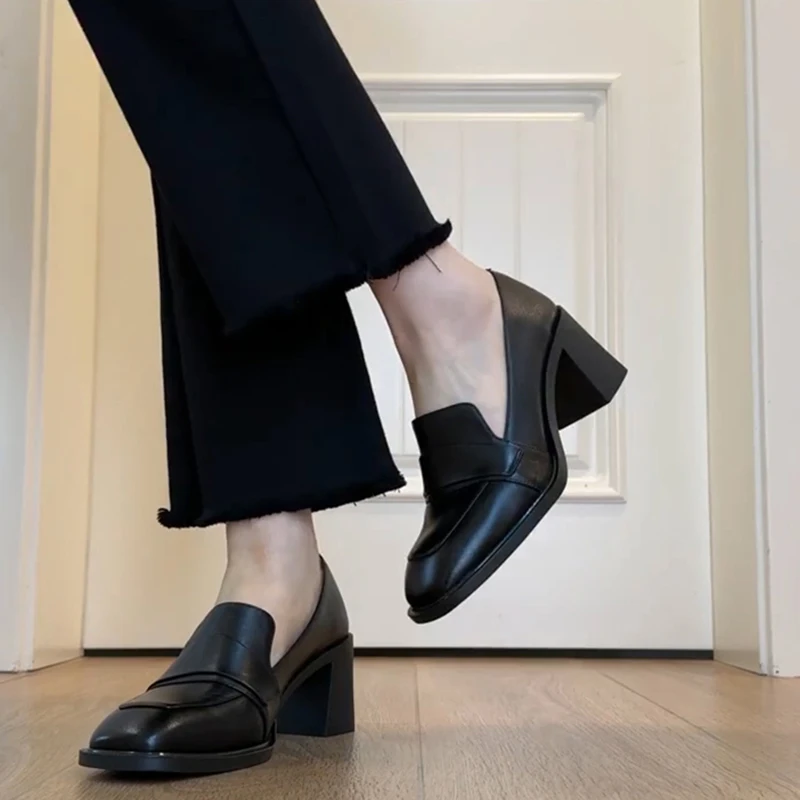
Value Proposition: Balancing Budget with Long-Term Comfort
Understanding what to expect at different price points helps make informed decisions about investing in walking loafers. While higher prices typically correlate with better comfort and longevity, not all premium features justify significant cost increases.
In entry-level walking loafers ($50-$100), expect basic cushioning and support. These typically feature synthetic materials or corrected-grain leather and provide reasonable comfort for limited walking. However, cushioning materials may compress quickly, and support features are often minimal. These represent good value for occasional use but rarely deliver true all-day comfort.
Mid-range options ($100-$200) offer substantially improved comfort features, including better arch support, higher-quality cushioning, and more durable materials. At this price point, expect genuine leather uppers, cushioned insoles with decent arch support, and rubber outsoles designed for walking. These typically provide a good balance of initial value and reasonable longevity.
Premium walking loafers ($200+) incorporate advanced comfort technologies, exceptional materials, and refined construction techniques. These feature full-grain leather or premium suede, proprietary cushioning systems, anatomically designed footbeds, and meticulous construction. While initially more expensive, their superior durability often makes them more economical long-term, with quality pairs lasting years with proper care.
When considering cost-per-wear, factor in:
* Anticipated frequency of use
* Walking distance and duration
* Replacement frequency based on wear patterns
* Versatility across different settings and outfits
Browse our collection of women’s flat classic loafers to compare options across price ranges, each carefully evaluated for their comfort-to-cost ratio.
Frequently Asked Questions About Comfortable Walking Loafers
Can loafers replace athletic shoes for long-distance walking?
While quality walking loafers can handle moderate distances comfortably (1-3 miles), they typically lack the specialized cushioning and support systems of dedicated walking or running shoes. For extended distances or fitness walking, athletic shoes still provide superior shock absorption and stability. However, well-designed walking loafers offer an excellent balance of style and comfort for everyday activities involving moderate walking.
How do I determine if my loafers have adequate arch support?
Look for visible contours in the footbed—a quality supportive loafer shows a noticeable curve that follows the natural arch shape rather than a completely flat insole. When trying them on, you should feel gentle, even contact along your arch without pressure points. The support shouldn’t collapse completely when standing, and you shouldn’t feel your arch “hanging” without support.
Are leather loafers or synthetic materials better for all-day walking?
Both materials can perform well for different needs. Quality leather molds to your foot over time for a custom fit and offers excellent durability and breathability. Synthetic materials often provide immediate comfort without breaking in and typically weigh less. For all-day walking, premium leather generally offers superior long-term comfort and breathability, while quality synthetics may provide better immediate comfort and lighter weight.
How can I make my current loafers more comfortable for walking?
Aftermarket insoles offer the most significant comfort improvement for existing loafers. Look for thin profile options that provide arch support without overcrowding the shoe. Additionally, heel grips can prevent slippage, while tongue pads can improve fit for slightly loose loafers. For leather pairs, professional stretching can address specific tight spots without compromising the shoe’s structure.
What are the signs that my loafers don’t fit properly for walking?
Red flags include numbness or tingling after moderate walking, consistent heel slippage, blisters in the same locations, toe cramping, or pain along the sides of your feet. Properly fitted walking loafers should never need “breaking in” to eliminate pain—while they may become more comfortable over time, actual pain indicates fit problems rather than normal adjustment.
Do expensive loafers always guarantee more comfort?
Not necessarily. While higher prices often correlate with better materials and construction, some premium loafers prioritize fashion over function. Conversely, some moderately priced brands specialize in comfort technology. Rather than focusing solely on price, evaluate the specific comfort features, materials, and construction methods. The most comfortable options often come from brands specifically known for walking comfort rather than just fashion prestige.
How long should quality walking loafers last with regular use?
With proper care, premium walking loafers should last 3-5 years with regular wear (2-3 times weekly). The upper typically outlasts the sole, with quality leather uppers maintaining their structure and appearance for many years. Rubber outsoles generally show wear first, though many higher-end loafers can be resoled to extend their lifespan significantly.
Can orthotic inserts be used effectively with loafers?
Yes, but this requires careful selection of both the loafers and the orthotics. Look for women’s low heel loafers with removable insoles, adequate depth, and slightly roomier construction. Slim-profile orthotics designed specifically for dress shoes offer the best compatibility with loafers’ typically lower-volume design. Some premium brands offer loafers specifically designed to accommodate orthotics without compromising appearance.
Conclusion: Stepping Forward in Style and Comfort
The perfect walking loafer no longer requires compromising style for comfort or vice versa. As we’ve explored throughout this guide, the essential elements of walking comfort—cushioning, arch support, flexibility, materials, fit, and weight—can be skillfully integrated into loafers that maintain their timeless aesthetic appeal.
The key to finding your ideal pair lies in understanding your specific needs. Consider your typical walking distance, foot structure, any existing conditions, and your style requirements. This personalized approach ensures you invest in loafers that truly serve your lifestyle rather than generic options that may fall short in critical areas.
While quality walking loafers often represent a significant investment, their versatility and durability make them surprisingly economical when considered on a cost-per-wear basis. Few footwear styles can transition so seamlessly across different settings while providing the support needed for active days.
The walking loafer has evolved far beyond its casual origins to become a sophisticated solution for the modern individual who refuses to sacrifice comfort for style. By selecting thoughtfully designed pairs with the comfort features highlighted in this guide, you can indeed have it all—classic style, exceptional comfort, and the confidence to keep moving throughout your busy day.

